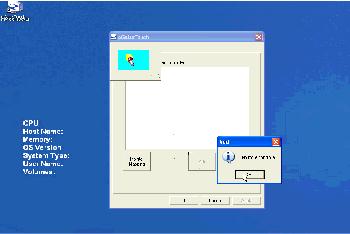

- #EGALAXTOUCH KALIBRIEREN INSTALL#
- #EGALAXTOUCH KALIBRIEREN SERIAL#
- #EGALAXTOUCH KALIBRIEREN DRIVERS#
- #EGALAXTOUCH KALIBRIEREN DRIVER#
Xinput -map-to-output "Wacom HID 4861 Finger touch" "eDP1"Īnd start, test and enable the systemd/User service rvice.
#EGALAXTOUCH KALIBRIEREN INSTALL#
Install xrandr-watch-git AUR, create a script ~/.xrandr-changed with execution permission to perform map-to-output, for example: There are xrandr events we can capture from a script. Using xrandr-watch-git to automate map-to-output The Calibrating Touchscreen page has an example udev rule for the case when a transformation matrix has been calculated manually and needs to be applied automatically. In that case it is better to use a udev rule. The mapping will be lost if the touchscreen is disconnected and re-connected, for example, when switching monitors via a KVM. You can automate this by putting these commands in your ~/.xinitrc or similar. $ xinput -map-to-output 'Serial Wacom Tablet WACf004 eraser' LVDS1 $ xinput -map-to-output 'Serial Wacom Tablet WACf004 stylus' LVDS1 We now need to simply map our inputs to our output like so:
#EGALAXTOUCH KALIBRIEREN SERIAL#
⎜ ↳ Serial Wacom Tablet WACf004 eraser id=14 ⎜ ↳ Serial Wacom Tablet WACf004 stylus id=13 $ xinput -list ⎡ Virtual core pointer id=2 So we have to find the ID of the stylus input: We wish to map our stylus input to LVDS1. LVDS1 is the display internal to the tablet, and VGA1 is the external monitor. VGA1 connected 1920x1080+1024+0 (normal left inverted right x axis y axis) 477mm x 268mm LVDS1 connected 1024x768+0+0 (normal left inverted right x axis y axis) 0mm x 0mm

Take for example the setup of having a wacom tablet and an external monitor xrandr shows both displays: This can be achieved with xinput as follows. To use multiple displays (some of which are touchscreens), you need to tell Xorg the mapping between the touch surface and the screen. Using a touchscreen in a multi-head setup Then, run xinput_calibrator and follow the instructions. There is a hack to emulates this scrolling behavior for every application in #Touchegg, but the X server still handles it as text selection (at least with Plasma). The two-fingers scrolling has to be implemented on the application side (see this link).įor Firefox, see Firefox/Tweaks#Enable touchscreen gestures. Again, evdev is likely to be the default if your touchscreen "just works."
#EGALAXTOUCH KALIBRIEREN DRIVERS#
Proprietary drivers exist for some devices (e.g.: xf86-input-egalax AUR), but it is recommended to try the open source drivers first.ĭepending on your touchscreen device choose an appropriate driver. Less common drivers, not contained in the repository, are:
#EGALAXTOUCH KALIBRIEREN DRIVER#


 0 kommentar(er)
0 kommentar(er)
